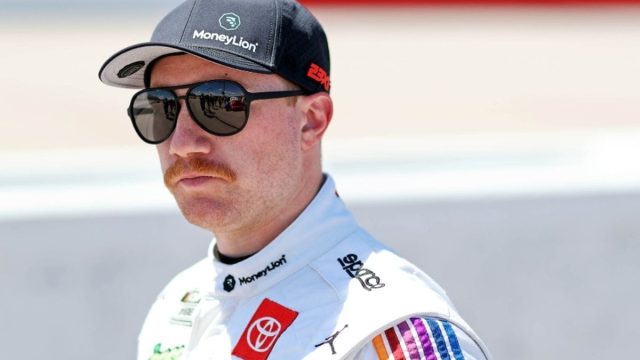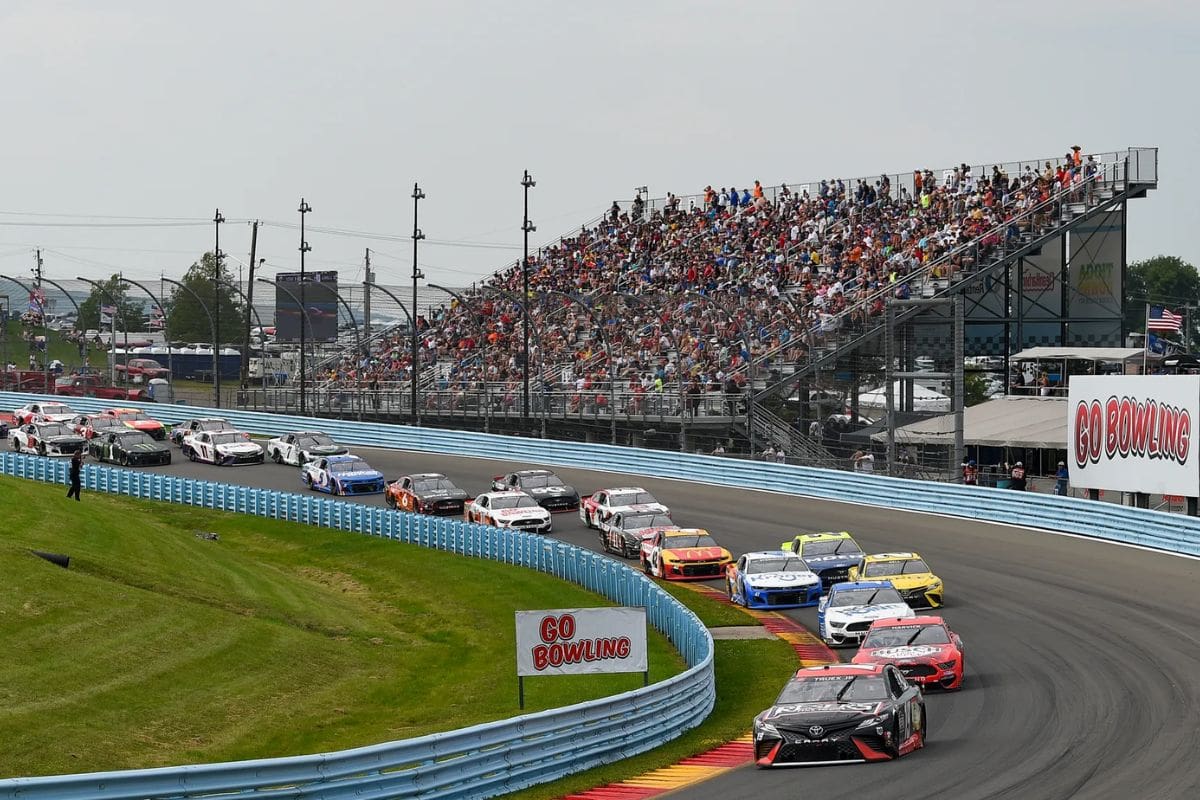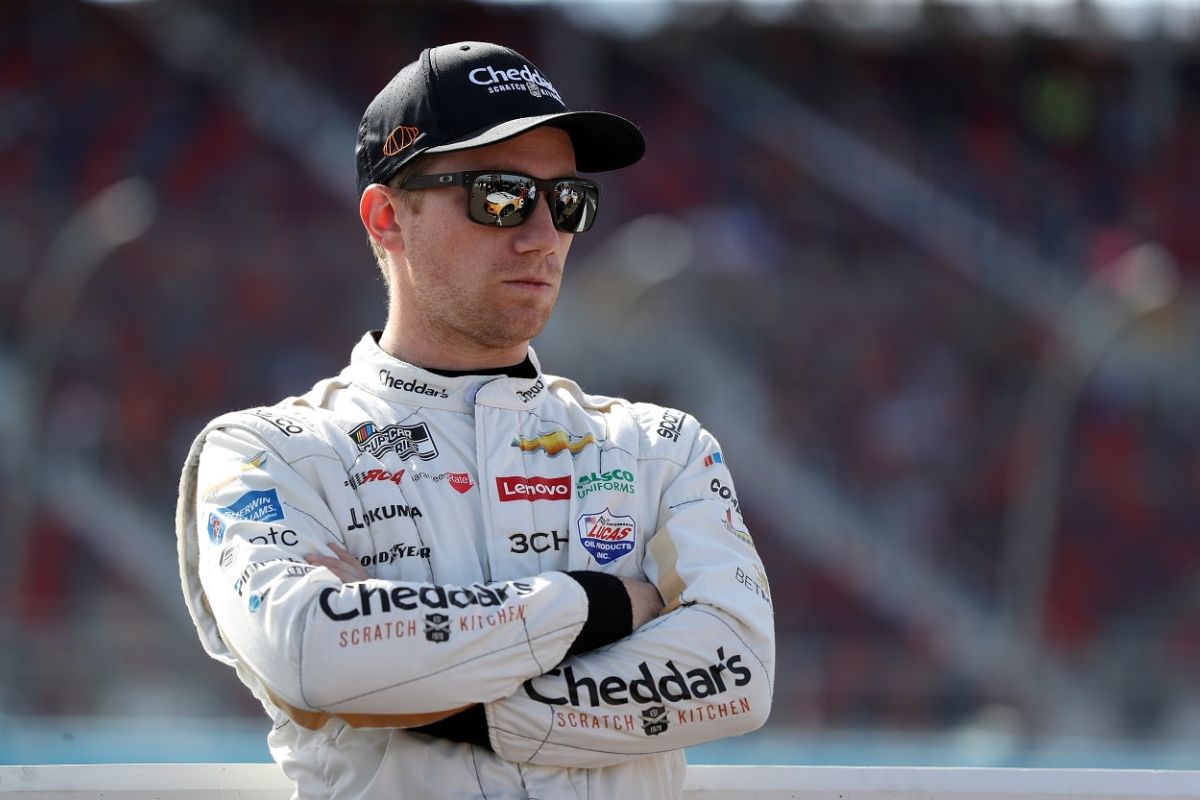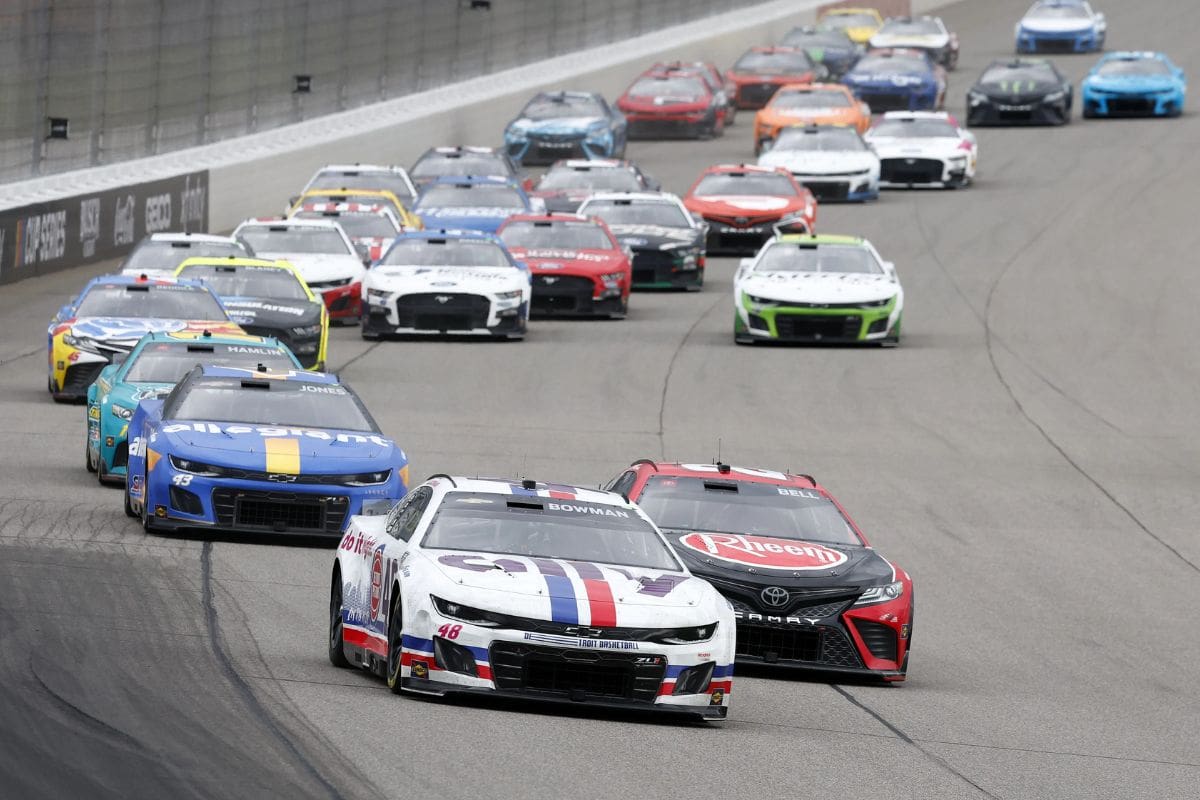Tyler Reddick Slams Aggressive Driving at Watkins Glen: In the aftermath of the recent NASCAR race at Watkins Glen, Tyler Reddick has emerged as a prominent voice against the escalating aggressive driving that blemished the event. His P27 finish, a direct consequence of reckless tactics on the track, prompted a critical examination of the prevailing racing culture, which Reddick argues has strayed from the foundational principles of mutual respect among competitors. As he calls for a thorough overhaul of NASCAR regulations to guarantee a safer and more respectful environment, the implications of his stance raise questions about the future direction of the sport and the balance between competition and safety.
Key Highlights
- Tyler Reddick criticized aggressive driving tactics at Watkins Glen, citing their negative impact on race experience and driver safety.
- His disappointing P27 finish followed multiple spin-outs, including a notable incident with Daniel Suarez.
- Reddick emphasized a decline in mutual respect and accountability among drivers, highlighting the loss of the “driver code.”
- He called for a comprehensive rule overhaul to restore sportsmanship and ensure a balance between competition and safety in NASCAR.
- Reddick’s advocacy resonates with fans and fellow drivers, pushing for immediate action from NASCAR leadership to address aggressive driving concerns.
The Chaos at Watkins Glen
Amid the roar of engines and the tension of competition, the chaos at Watkins Glen unfolded dramatically, emphasizing the vulnerabilities of the current NASCAR regulations. The race, marked by an unusual frequency of wrecks, particularly in the notorious bus stop section, highlighted a growing concern regarding driver conduct and the effectiveness of existing rules in managing aggressive racing behaviors.
From the very initial lap, the race devolved into mayhem as notable drivers, including Ryan Blaney and Ricky Stenhouse Jr., found themselves caught in the turmoil. As competitors charged into the turn, the bus stop became a focal point for contact, leading to multiple incidents that not only compromised the integrity of the race but also raised questions about the preparedness of drivers to navigate such high-stakes scenarios.
One driver openly expressed dissatisfaction with the reckless driving witnessed, suggesting a need for a reassessment of NASCAR’s regulatory framework. The frequency and nature of the wrecks call into question whether current penalties and oversight sufficiently deter aggressive actions that endanger not just the offending drivers, but their peers as well.
As the dust settled on the chaotic event, it became clear that the incidents at Watkins Glen serve as a microcosm of a larger issue within NASCAR, necessitating a critical evaluation of driving standards and enforcement measures.
Tyler Reddick’s Discontent
Frustrated by the aggressive driving tactics observed at Watkins Glen, Tyler Reddick has emerged as a vocal critic of the current state of NASCAR’s regulations. Despite securing a place in the playoffs and sitting comfortably in sixth position, his discontent stems from the on-track conduct that blemished his race experience. Reddick’s disappointing finish at P27, following multiple spin-outs, exemplifies the pitfalls of overly aggressive racing.
The incident with Daniel Suarez, where contact led to Reddick’s spin-out, has raised questions about the standards of conduct expected from drivers. In an environment where tactical navigation is paramount, excessive aggression can undermine the integrity of the competition. Reddick’s performance, which originally showed promise as he climbed to seventh, was ultimately sabotaged by such tactics, leading to a notable drop in position.
To better understand Reddick’s perspective, the following table summarizes critical aspects of the race:
View this post on Instagram
Reddick’s call for a rule overhaul reflects a broader concern within NASCAR regarding the need for balance between competitive aggression and the necessity for driver safety and respect on the track.
Reddick’s Criticism of Racing Conduct
The recent events at Watkins Glen have prompted Tyler Reddick to vocalize his concerns regarding the erosion of racing conduct within NASCAR. In a frank discussion following the race, Reddick asserted, “There is no more driver code. It’s gone,” highlighting a perceived decline in mutual respect and accountability among competitors. His remarks resonate deeply within the racing community, especially in light of Martin Truex Jr.’s characterization of the current state of racing as “ridiculous.
This sentiment emphasizes a growing frustration among drivers regarding aggressive driving tactics that overshadow traditional racing etiquette. Reddick specifically cited a troubling trend observed during the race, where drivers exploited the behavior of others—driving into corners and using the car ahead as a “brake pedal.”
“You go back to watch some cars, and lots of people are driving into the corner on a restart, just using the car ahead as a brake pedal. It sucks.” – Reddick
This tactic not only compromises safety but also detracts from the essence of competitive racing, which inherently relies on skill and strategy rather than reckless actions. Reddick’s reflections suggest a longing for a return to a more disciplined form of racing, where respect and decorum play crucial roles in the drivers’ code of conduct.
“Running someone a little wide while battling for position is one thing, but running them off the track? I just don’t like racing that way.” – Reddick
By addressing aggressive driving practices and fostering an environment of sportsmanship, NASCAR can safeguard its integrity and guarantee that drivers compete on a level playing field, honoring the foundational principles that have long defined the sport.
Reddick’s Views on Next-Gen Cars
A substantial shift in racing dynamics has emerged with the introduction of next-gen cars, prompting Tyler Reddick to share his insights on their impact. Reddick, a driver who has navigated the complexities of both aggressive racing and competitive strategy, acknowledges that the characteristics of these new vehicles have altered traditional racing conduct.
He openly admitted to his own lapses in restraint, yet he draws a clear line between acceptable racing tactics and those that compromise the integrity of the sport.
Reddick highlights a fundamental difference in how next-gen cars handle contact compared to their predecessors. “With the old car, you could bump a little, but you’d knock the radiator out,” he stated. In contrast, the next-gen cars afford drivers a degree of leniency, allowing them to employ their front bumpers as tools to displace competitors without immediate consequence.
“With the old car, you could bump a little, but you’d knock the radiator out. With this car, it feels like you can just use the front bumper and the padding around you to just knock people out of the way if you want to.” – Reddick
This capability, while beneficial in some contexts, raises concerns about fostering an overly aggressive racing culture.
During the tumultuous Watkins Glen race, Reddick found himself entangled in the chaos, a situation he described as “difficult from the start.” His success on road courses has often kept him ahead of the fray, but he recognizes that the current state of racing necessitates a reevaluation of rules.
As Reddick poignantly put it, “It just is what it is. I hope it changes.” His remarks highlight a critical conversation about how evolving vehicle technology must align with the principles of fair competition in NASCAR.
Concerns About Aggressive Driving
Concerns surrounding aggressive driving in NASCAR have intensified as the introduction of next-gen cars has fundamentally altered the competitive landscape. The sturdier design of these vehicles has enabled drivers to push the limits of acceptable racing tactics, leading to a rise in confrontational actions on the track. Tyler Reddick, a prominent voice in this discussion, highlights the distinction between fair competition—such as bumper-to-bumper racing—and the problematic use of other cars as brakes in cornering situations.
To better understand the implications of aggressive driving, consider the following points:
- Increased Contact: The resilient nature of next-gen cars encourages drivers to engage in more contact, blurring the lines between tactical racing and reckless behavior.
- Safety Concerns: While designed for driver safety, the stronger cars may inadvertently promote dangerous tactics, as drivers feel emboldened to act aggressively without fearing considerable damage.
- Competitive Integrity: The rise in aggressive driving raises questions about the fairness of competition, as some drivers may exploit these tactics to gain an advantage, undermining traditional racing ethics.
- Need for Regulation: Reddick’s call for a potential overhaul of NASCAR’s rules suggests an urgent need for stricter regulations to manage aggressive driving, ensuring that competitive racing remains safe and fair.
As NASCAR continues to evolve, the dialogue surrounding aggressive driving and its impact on the sport becomes increasingly vital for preserving its integrity.
News in Brief: Tyler Reddick Slams Aggressive Driving at Watkins Glen
Tyler Reddick’s critique of aggressive driving at Watkins Glen highlights a pressing issue within NASCAR that threatens the sport’s integrity and safety. The call for a rule overhaul reflects a broader concern among drivers regarding the erosion of mutual respect and the need for a stronger adherence to the “driver code.” Addressing these concerns through stricter regulations could improve competitive fairness and foster a safer racing environment, ultimately benefiting the sport as a whole.
ALSO READ: Tyler Reddick’s Post-Race Anger Against Daniel Suarez After Disastrous Watkins Glen Race



